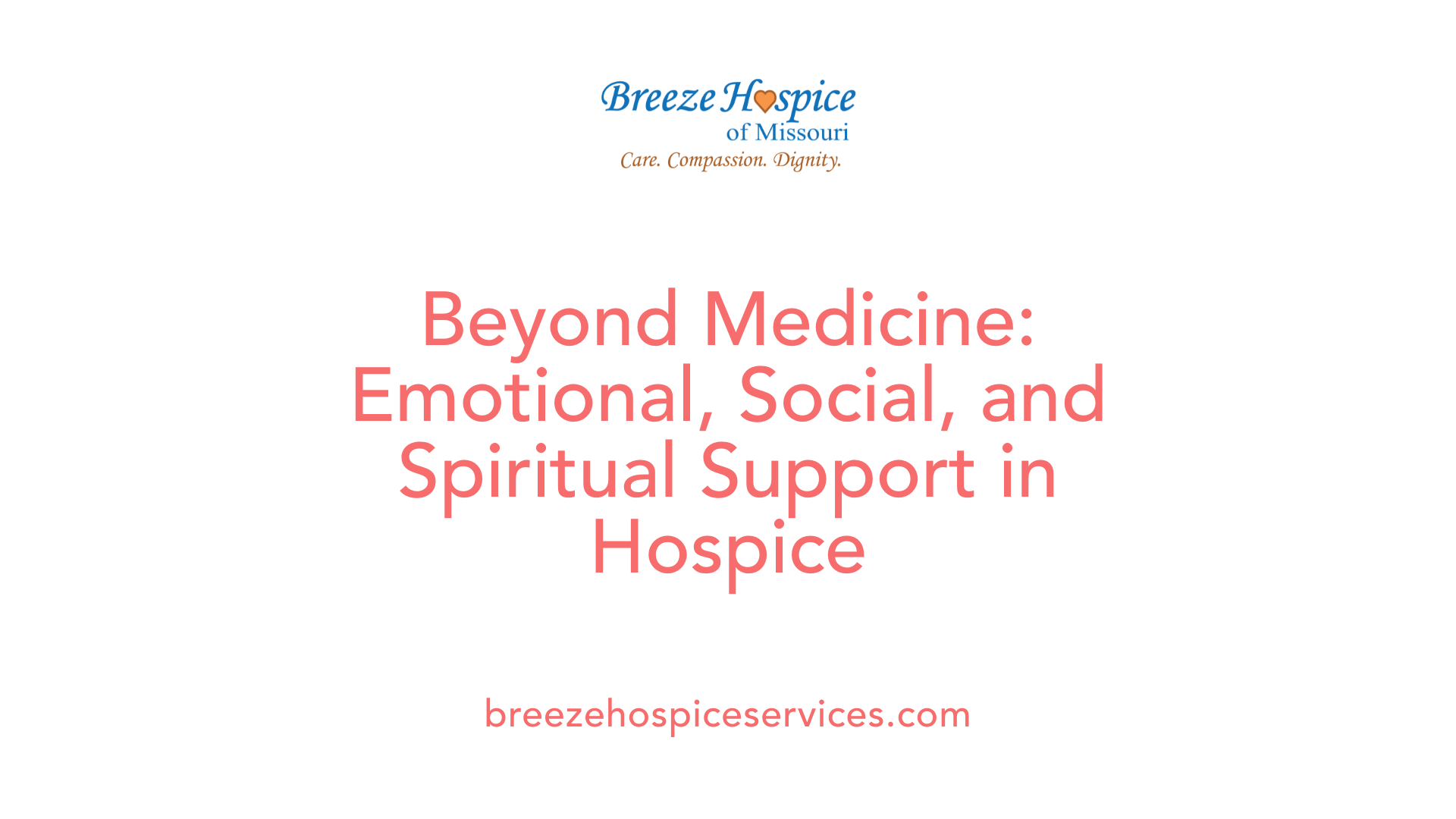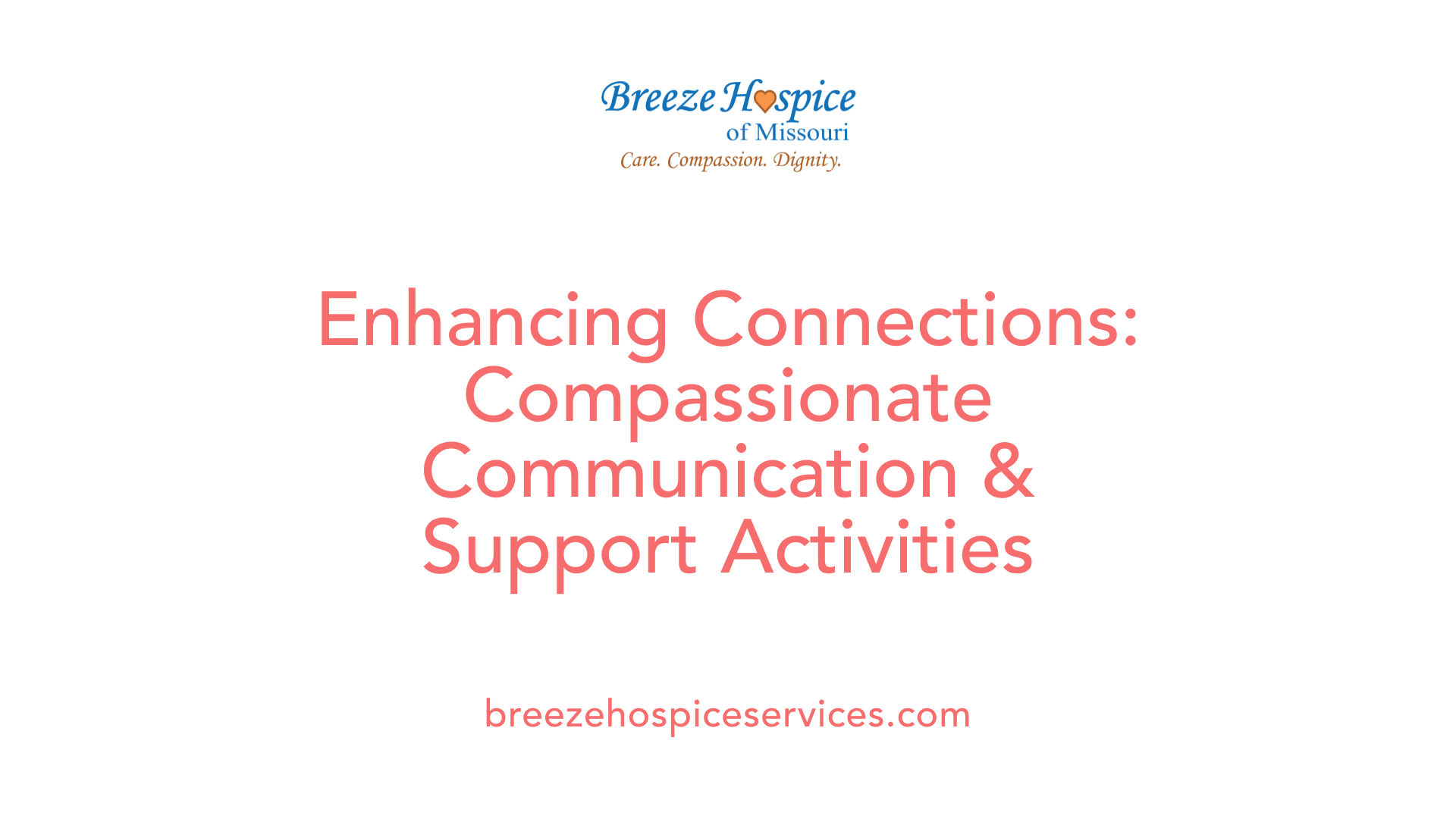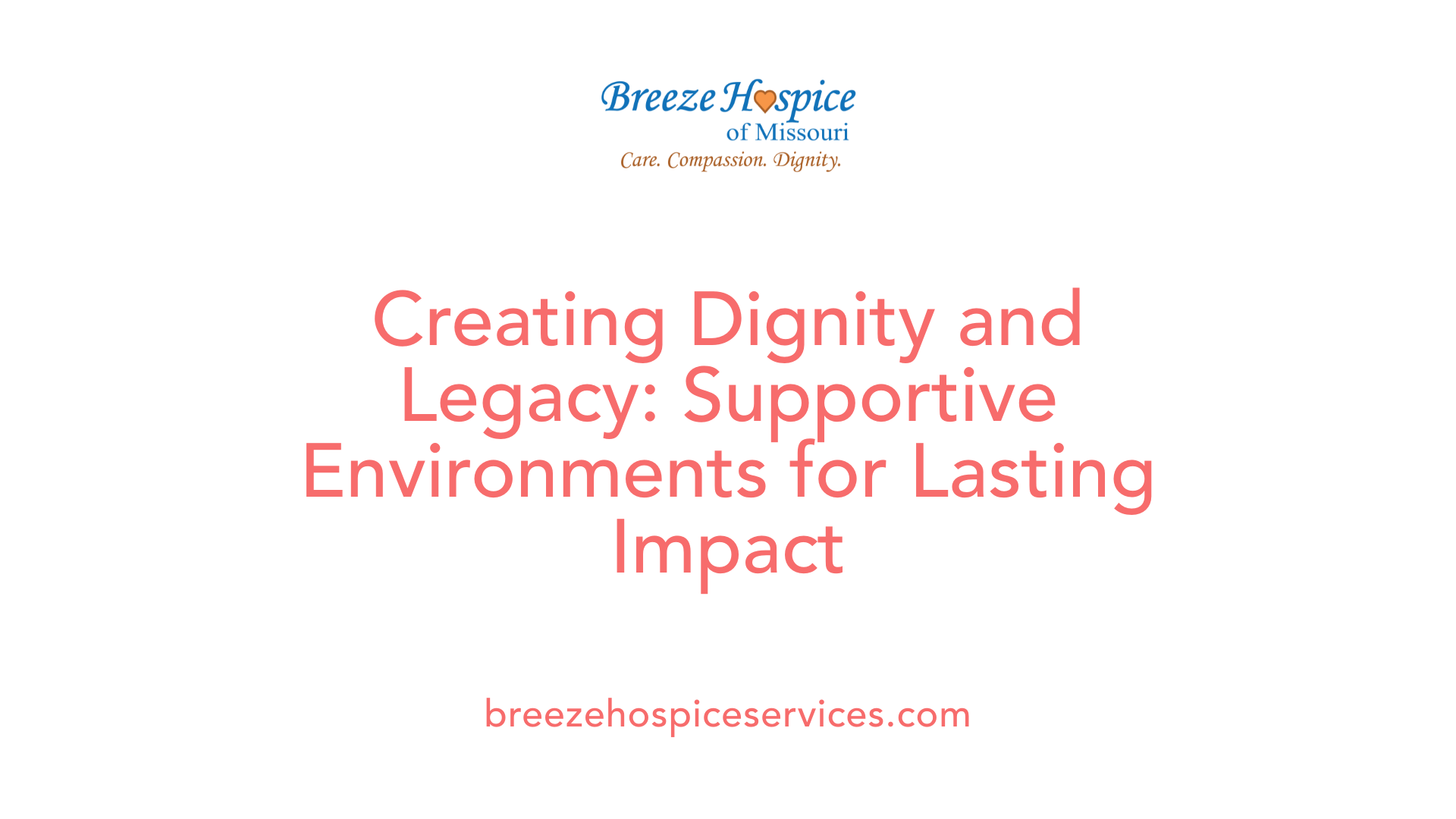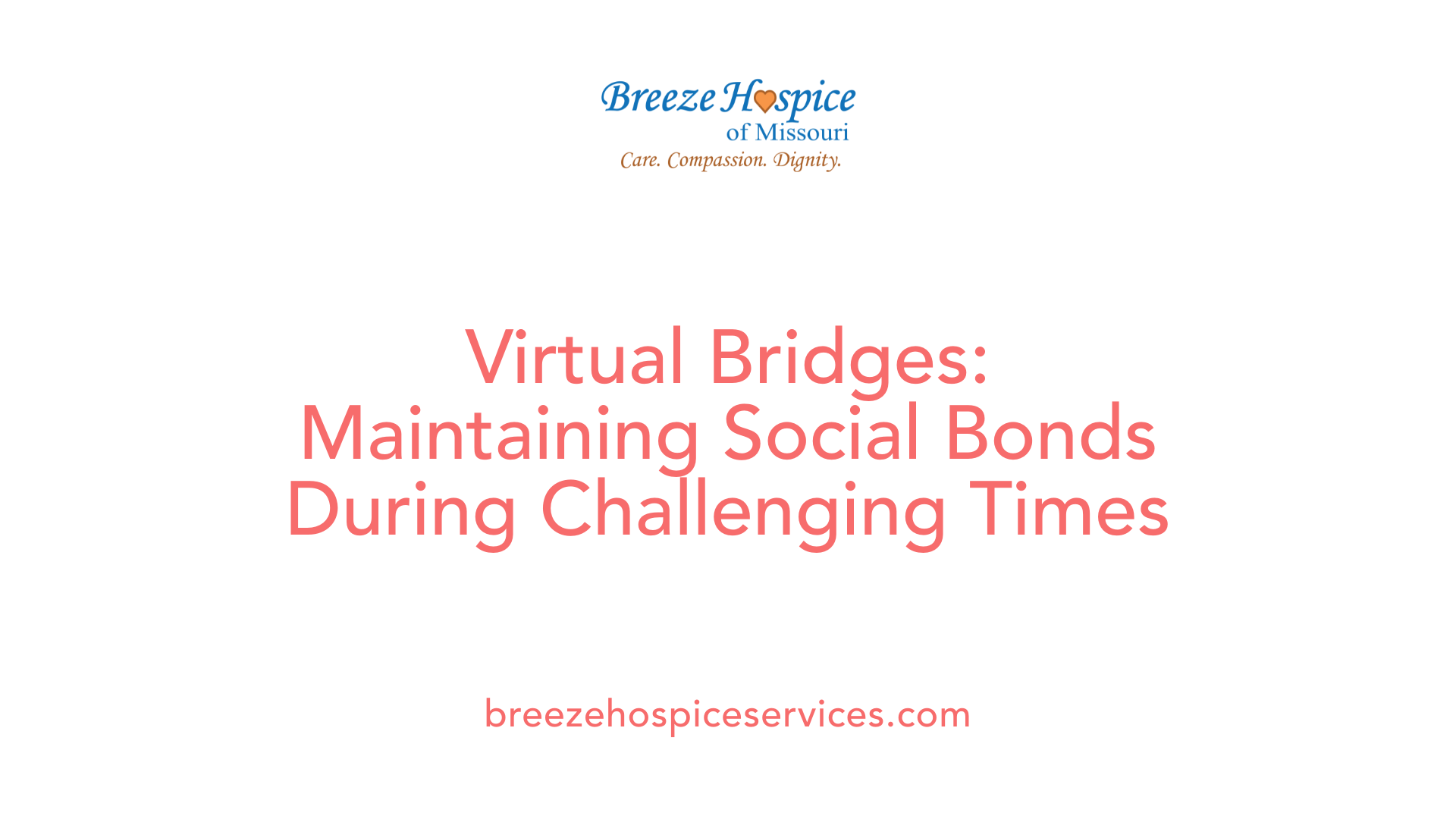The role of hospice services in reducing feelings of isolation
July 14, 2025
Connecting Hearts at the End of Life

Understanding Hospice's Impact on Social and Emotional Well-being
Hospice services transcend traditional medical care by fostering a nurturing environment where social interaction, emotional support, and spiritual guidance play pivotal roles in alleviating feelings of isolation for terminally ill patients and their families. This comprehensive approach emphasizes dignity, connection, and community, ensuring that individuals facing life's final chapter are supported holistically.
Holistic Support: Beyond Medical Management

How does hospice extend support beyond symptom management?
Hospice care aims to provide more than just medical relief from pain and symptoms. It encompasses emotional, social, and spiritual support tailored to each patient’s unique needs. The environment created in hospice settings encourages open communication and connection, fostering a sense of safety and dignity.
Patients are offered opportunities for social interaction through group activities, day services, and visits from volunteers and staff. These endeavors help reduce feelings of loneliness and create a community of support. Participating in storytelling, listening to music, or engaging in art therapies enhances well-being and helps patients maintain a sense of purpose.
Physical comfort is complemented by emotional stability, achieved through counseling, spiritual conversations, and support groups. This holistic approach ensures that patients live their final days with dignity, peace, and meaningful connection.
Connecting Through Compassionate Communication and Activities

How hospice facilitates social interaction among patients and families
Hospice care plays an essential role in helping patients and their families stay connected during end-of-life journeys. Beyond providing medical comfort, hospice teams actively promote social interaction as a pathway to emotional well-being. They facilitate phone calls, video chats, and transportation assistance so loved ones can remain close, even when physical meetings are limited.
Hospice professionals—including nurses, social workers, and chaplains—encourage open conversations about fears, hopes, and memories. These interactions foster a supportive environment where both patients and families can express their feelings honestly and receive empathetic listening. This ongoing communication builds a sense of community, reduces feelings of isolation, and helps families feel more involved in care decisions.
The role of activities and group support in reducing loneliness
Activities and group support services within hospice settings are designed to combat social deficits and promote a sense of belonging. Group therapy sessions, art projects, music activities, storytelling, and communal meals create structured opportunities for social engagement.
Participating in these activities allows patients to express themselves, explore their interests, and connect with others facing similar challenges. Meeting peers in supportive environments can help foster reciprocal friendships, creating a network of ongoing emotional support.
Moreover, these activities boost self-confidence by helping patients regain a sense of purpose and normalcy. They also encourage open discussions around difficult topics, such as mortality and grief, facilitating emotional adjustment and acceptance.
How emotional and social support is integrated into hospice care
Hospice providers include trained professionals—social workers, chaplains, and counselors—who tailor emotional support to each individual’s needs. Spiritual care addresses existential concerns and helps patients find meaning, while counseling and therapy assist in managing depression, anxiety, and loneliness.
Support groups for patients and families foster shared experiences and collective healing, reducing feelings of isolation. Bereavement programs extend emotional support to families after a loved one’s passing, easing grief and fostering community ties.
This comprehensive approach ensures hospice care aligns physical comfort with emotional resilience, ultimately improving quality of life and fostering emotional connection.
A summary of how hospice activities and social engagement aid emotional and physical well-being
| Aspect | Description | Benefits |
|---|---|---|
| Communication | Phone calls, video chats, transportation | Maintains connections, reduces loneliness |
| Group activities | Art therapy, music, storytelling | Fosters self-expression, social bonds |
| Support groups | Peer sharing, counseling | Eases grief, provides mutual support |
| Spiritual support | Rituals, faith discussions | Promotes peace, addresses existential concerns |
| Caregiver involvement | Education, respite services | Alleviates stress, reduces burnout |
Hospice’s focus on social engagement creates an environment where patients can live their final days with dignity, purpose, and surrounded by compassion. These connections not only improve emotional health but can positively influence physical comfort and overall well-being, embodying a truly holistic approach to end-of-life care.
The Power of Supportive Environments and Legacies

How does hospice care promote a sense of control and dignity?
Hospice care emphasizes respecting each patient's autonomy by involving them actively in decisions about their treatment and daily routines. This approach helps patients feel empowered and maintains their sense of control during a vulnerable time. Hospices are specially designed to offer a warm, welcoming environment that fosters emotional comfort and safety. Patients can express their feelings openly, whether through conversations, rituals, or shared activities, which helps them find closure and peace.
Trained and compassionate healthcare professionals prioritize comfort, spiritual needs, and emotional stability. They personalize care plans that reflect individual values and preferences, enabling patients to engage in meaningful activities and spiritual practices. Rituals, storytelling, and legacy projects allow patients to leave lasting messages or artifacts, reinforcing their sense of self and dignity. By creating a supportive space that honors personal choices, hospice care helps maintain dignity and facilitates a sense of control over one's final days.
The importance of legacy projects and final goodbyes
Engaging in legacy projects and having the opportunity to say final goodbyes are vital for emotional healing and peace.
Legacy activities include creating memory books, recording stories, or participating in spiritual rituals that help patients communicate love, forgiveness, or reflections. These acts serve as meaningful symbols of their life and relationships, offering comfort to both patients and their families.
Final goodbyes provide a chance for open expression, helping patients reconcile feelings and strengthen emotional bonds. Such moments can foster acceptance of the end of life, easing fears and regrets. They also enable families to receive reassurance and gratitude, which can ease grief after the loss.
Legacy projects and farewells not only support emotional well-being during life but also leave enduring symbols of love and resilience beyond it. These acts contribute significantly to the healing process, ensuring that patients’ final days are filled with purpose, connection, and dignity.
| Aspect | Role | Description |
|---|---|---|
| Environment | Creates safety and comfort | Hospices are designed to promote a welcoming, reassuring space where patients can express emotions freely |
| Personalization | Empowers patient autonomy | Care plans reflect individual wishes and values, supporting dignity |
| Rituals & Legacy | Facilitate acceptance | Activities like storytelling, memory projects, and final goodbyes foster emotional healing |
| Emotional Benefits | Promote peace and closure | Open expressions of love, gratitude, and forgiveness strengthen bonds and aid in emotional closure |
Understanding how hospice settings foster a supportive and respectful environment illustrates their role in enhancing the quality of life and emotional resilience. By valuing personal agency, facilitating meaningful rituals, and honoring final wishes, hospice care helps patients and families find peace and dignity at life’s end.
Facilitating Connection in a Time of Crisis

How has hospice support evolved during crises like COVID-19?
The COVID-19 pandemic has significantly impacted traditional hospice care models by restricting in-person interactions to prevent virus transmission. In response, hospice organizations have rapidly expanded their use of telehealth and digital platforms to continue providing essential emotional, spiritual, and social support.
Hospice providers now regularly use video calls, phone consultations, and virtual support groups to keep patients connected with loved ones and caregivers. These technological adaptations enable patients to maintain their social bonds, participate in group activities, and access spiritual care remotely.
Additionally, hospices have partnered with community organizations to develop volunteer programs that operate virtually. Volunteers now offer companionship and support through calls and online interactions, helping to reduce feelings of loneliness.
The shift to remote services demonstrates the resilience and adaptability of hospice teams. They focus on ensuring patients experience dignity, comfort, and emotional support despite social restrictions. This evolution underscores a commitment to uphold the core values of hospice care during challenging times, preserving social connectedness and emotional well-being.
What strategies are used to maintain social bonds virtually?
Hospice services employ a variety of creative strategies to foster social bonds through virtual means. Some of the most common approaches include:
- Scheduled Video Calls: Regularly arranged video chats allow patients to see family members and friends, strengthening emotional ties.
- Virtual Group Activities: Web-based singing, storytelling, or art sessions promote social interaction among patients with similar health circumstances.
- Spiritual Streaming Services: Live-streamed religious services or prayer groups meet spiritual needs and create a shared sense of purpose.
- Online Support Forums and Support Groups: Facilitated virtual spaces enable patients and families to share experiences, offer mutual support, and cope with emotional challenges.
- Legacy Projects and Creative Therapies: Digital storytelling, music, art, and memory books conducted online help patients express their histories and feelings.
Hospice staff and volunteers often assist with technical issues, ensuring patients can participate comfortably. This comprehensive approach maintains a sense of community and purpose, which is vital for psychological and emotional health, particularly during pandemics when physical contact is limited.
Additional Resources for Further Understanding
| Search Query | Focus Area | Description |
|---|---|---|
| Hospice telehealth support | Remote medical and emotional care | Details how telehealth bridges the gap created by social restrictions |
| Virtual social engagement in hospice | Maintaining social bonds remotely | Explores innovations in virtual support activities |
| Coping with social isolation during crises | Emotional resilience | Provides insights and techniques for overcoming loneliness |
This integration of technology within hospice care highlights the ongoing effort to uphold human connection, ensuring that patients do not face their final days in solitude. Through virtual support, hospice services continue to foster dignity, hope, and peace, even in times of crisis.
Supporting Dignity, Connection, and Peace
Hospice services serve as a cornerstone in alleviating feelings of isolation for terminally ill patients and their families by offering a holistic blend of physical, emotional, social, and spiritual support. Through personalized care, support networks, engaging activities, and innovative use of technology, hospice fosters an environment where individuals can approach end-of-life with dignity, purpose, and connection. As the landscape of healthcare evolves, hospice continues to adapt by integrating virtual support and community collaboration, ensuring that no one faces their final days alone. The compassionate, comprehensive care provided by hospice not only alleviates loneliness but also enriches the quality of life, allowing patients and families to find comfort, closure, and peace in life's most vulnerable moments.
References
- The Role of Hospice Care in Addressing Social Isolation
- Explaining how and why social support groups in hospice day ...
- The Psychological Benefits of Hospice Care
- Hospices Help Address Social Isolation in Patients
- Why Emotional Support Matters in Hospice Care Programs
- Loneliness and Social Isolation in Palliative Care: A Call to Action
- Emotional and Psychological Support During Hospice
- Ease the Stress from Increased Isolation | Elizabeth Hospice
- Understanding the Challenges of Hospice Caregiving
- How Hospice Supports and Empowers Families



































































































